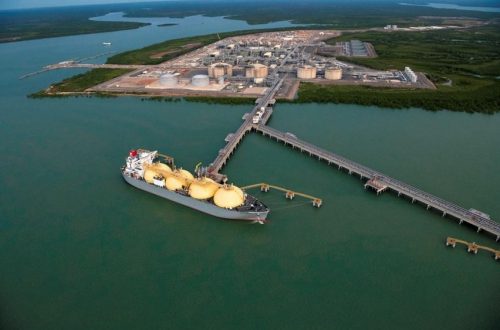
Australia could soon surpass Qatar as the world’s largest liquefied natural gas (LNG) exporter, according to Australia’s Department of Industry, Innovation, and Science (DIIS).
Australia already surpasses Qatar in LNG export capacity and exported more LNG than Qatar in November 2018 and April 2019. Within the next year, as Australia’s newly commissioned projects ramp up and operate at full capacity, U.S. Energy Information Administration expects Australia to consistently export more LNG than Qatar.
The country’s LNG export capacity increased from 2.6 billion cubic feet per day (Bcf/d) in 2011 to more than 11.4 Bcf/d in 2019. The LNG exports are forecast to grow to 10.8 Bcf/d by 2020–21 once the recently commissioned Wheatstone, Ichthys, and Prelude floating LNG (FLNG) projects ramp up to full production.
Prelude FLNG, a barge located offshore in northwestern Australia, was the last of the eight new LNG export projects that came online in Australia in 2012 through 2018 as part of a major LNG capacity buildout.
Starting in 2012, five LNG export projects were developed in northwestern Australia bringing its total LNG export capacity to 8.1 Bcf/d.
In eastern Australia, three LNG export projects were completed in 2015 and 2016 with a combined nameplate capacity of 3.4 Bcf/d. All three projects in eastern Australia use natural gas from coalbed methane as a feedstock to produce LNG.
Most of Australia’s LNG is exported under long-term contracts to three countries: Japan, China, and South Korea. An increasing share of Australia’s LNG exports in recent years has been sent to China to serve its growing natural gas demand.
The remaining volumes were almost entirely exported to other countries in Asia, with occasional small volumes exported to destinations outside of Asia.
Several private companies proposed to develop LNG import terminals in southeastern Australia. Of the five proposed LNG import projects, Port Kembla LNG (proposed import capacity of 0.3 Bcf/d) is in the most advanced stage, having secured the necessary siting permits and an offtake contract with Australian customers. If built, the Port Kembla project will use the floating storage and regasification unit (FSRU) Höegh Galleon starting in January 2021.